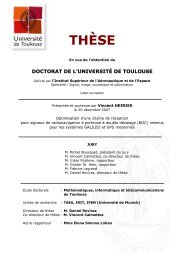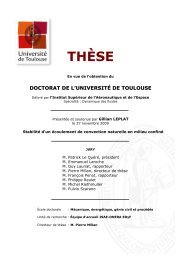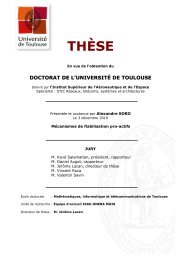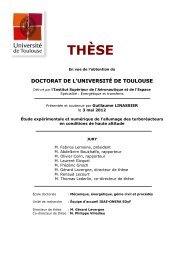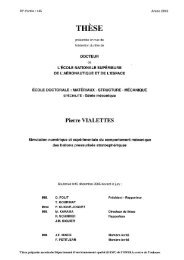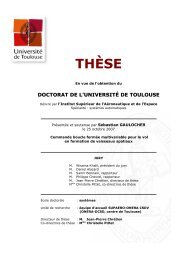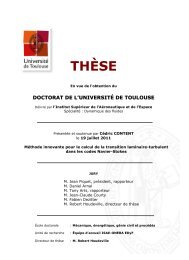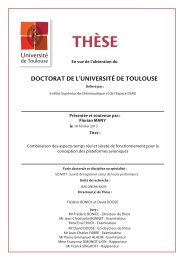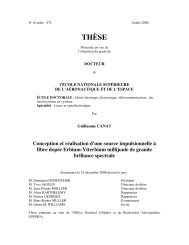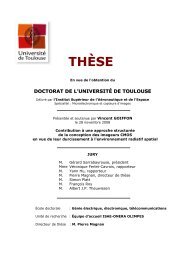Modélisation et simulation numérique de la génération de plasma ...
Modélisation et simulation numérique de la génération de plasma ...
Modélisation et simulation numérique de la génération de plasma ...
You also want an ePaper? Increase the reach of your titles
YUMPU automatically turns print PDFs into web optimized ePapers that Google loves.
9. <strong>Modélisation</strong> 2D du cas expérimentaly (m)0.120.110.10.090.080.070.060.050.040.030.020.010-0.02 0 0.02 0.04 0.06 0.08 0.1 0.12x (m)y (m)0.0090.0080.0070.0060.0050.0040.0030.0020.00100.018 0.02 0.022 0.024 0.026 0.028 0.03x (m)y (m)0.0090.0080.0070.0060.0050.0040.0030.0020.00100.05 0.052 0.054 0.056 0.058 0.06 0.062x (m)Figure 9.3 – Mail<strong>la</strong>ge 2D construit à partir <strong>de</strong>s isopotentielles <strong>et</strong> <strong>de</strong>s lignes <strong>de</strong> champ <strong>de</strong> <strong>la</strong>configuration expérimentale Fil - Fil (haut), détail à l’ano<strong>de</strong> (gauche) <strong>et</strong> à <strong>la</strong> catho<strong>de</strong> (droite)4. on fait une itération sur les lignes i ∈ [1,l x +1]. Pour déterminer le centre C i,j , on s’appuiesur le centre C i−1,j . En ce point, on connaît analytiquement <strong>la</strong> direction n E du champextérieur E ext = −∇V ext grâce aux formules :n E (x,y).x =n E (x,y).y =β(βx − r 1 )(βx − r 1 ) 2 + (βy) 2 − x − βr 1(x − βr 1 ) 2 + y 2β 2 y(βx − r 1 ) 2 + (βy) 2 − y(x − βr 1 ) 2 + y 2on cherche alors l’intersection <strong>de</strong> <strong>la</strong> ligne <strong>de</strong> champ issue <strong>de</strong> C i−1,j <strong>et</strong> <strong>de</strong> direction n E i−1,javec l’isopotentielle Φ(i). On utilise pour ce<strong>la</strong> une métho<strong>de</strong> itérative <strong>de</strong> dichotomie.128



